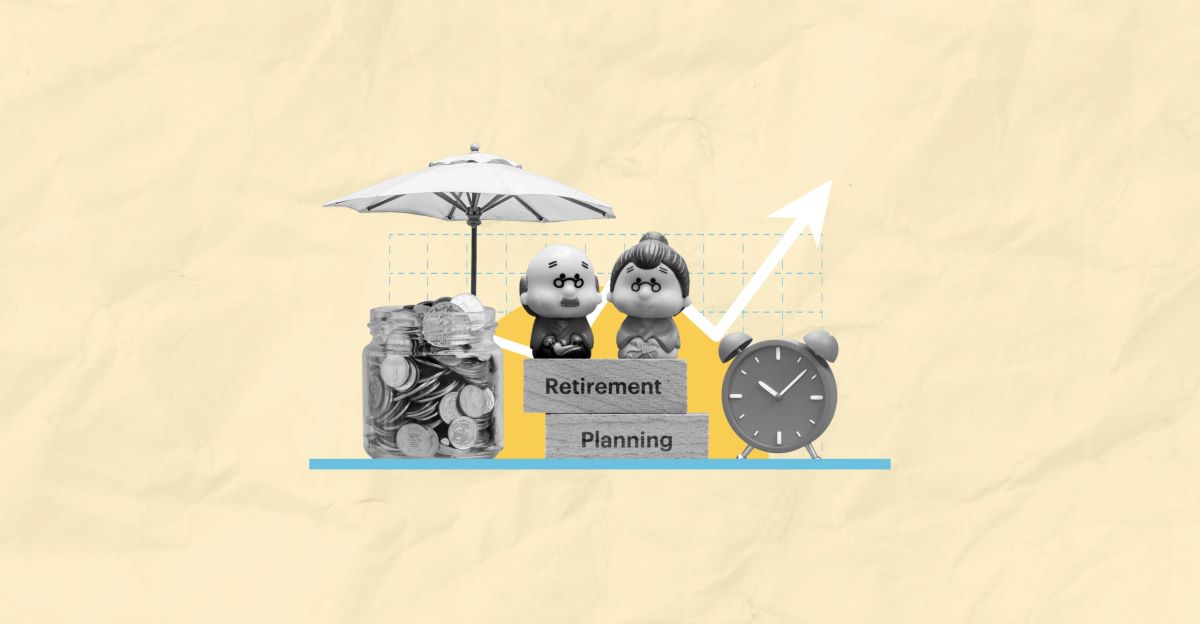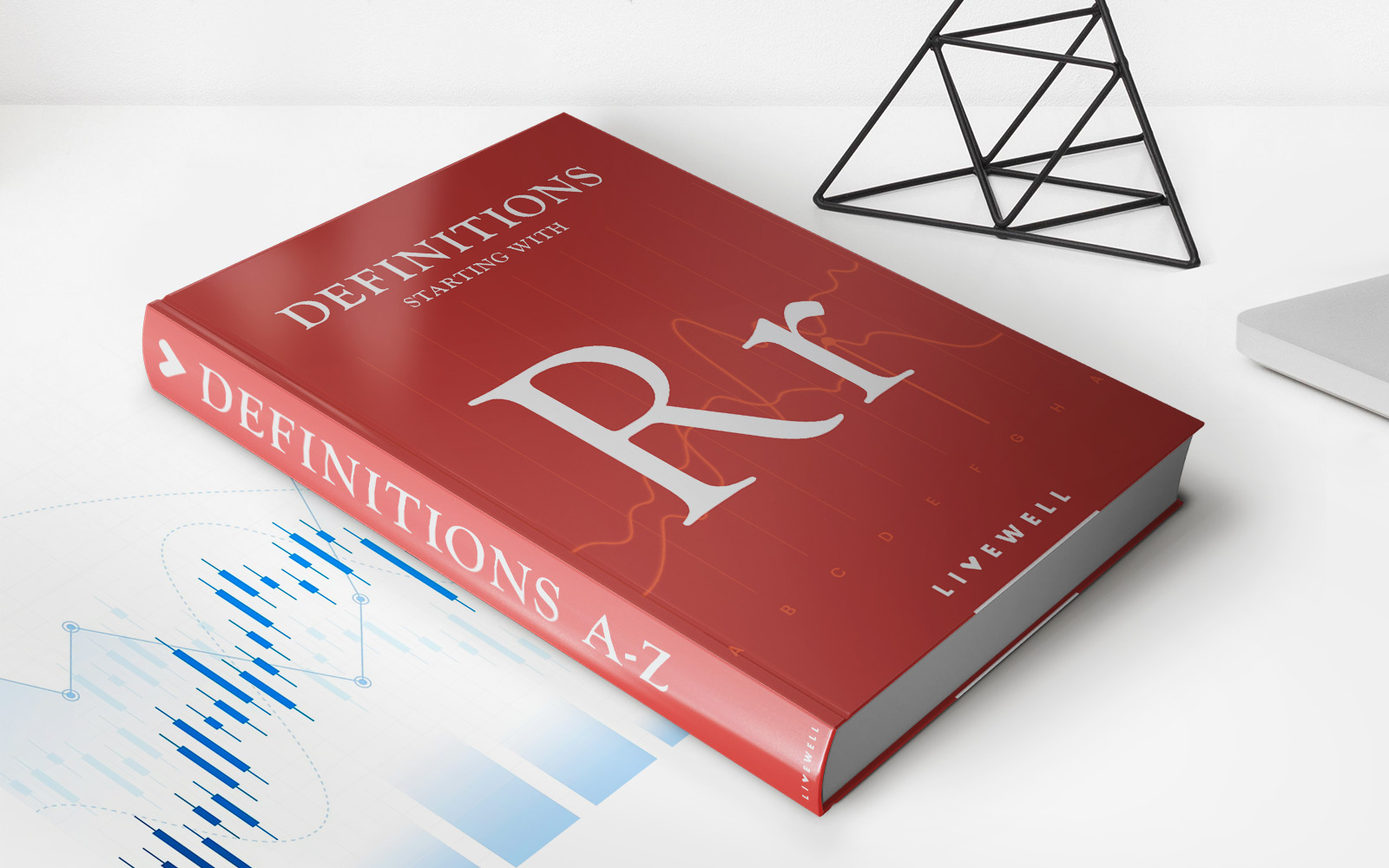

Finance
What Questions For Retirement Planning
Published: January 21, 2024
Get expert advice for retirement planning and finance. Discover the essential questions to ask and ensure a secure financial future.
(Many of the links in this article redirect to a specific reviewed product. Your purchase of these products through affiliate links helps to generate commission for LiveWell, at no extra cost. Learn more)
Table of Contents
- Introduction
- Why Retirement Planning is Important
- Factors to Consider for Retirement Planning
- How Much Money Do You Need for Retirement?
- What Age Should You Start Planning for Retirement?
- What are the Different Types of Retirement Accounts?
- Should You Work with a Financial Advisor for Retirement Planning?
- What are the Potential Risks and Challenges in Retirement Planning?
- How Does Social Security Factor into Retirement Planning?
- Strategies for Achieving Your Retirement Goals
- Conclusion
Introduction
Welcome to the world of retirement planning! As you embark on this journey towards financial security in your golden years, it’s important to understand the ins and outs of retirement planning and the questions you need to consider along the way. Whether you’re just beginning your career or nearing retirement age, it’s never too early or too late to start planning for your future.
Retirement planning involves assessing your financial situation, setting goals, and creating a roadmap to achieve those goals. It’s about ensuring that you have enough money to support your desired lifestyle once you stop working. However, with the wide array of retirement options, investment vehicles, and considerations to bear in mind, it can be overwhelming to navigate the planning process alone. That’s where this guide comes in handy.
In this article, we will explore some of the key questions that arise during retirement planning. We will delve into the factors you need to consider, the different types of retirement accounts available to you, and the potential risks and challenges you may encounter along the way. We’ll also touch upon the role of Social Security and discuss strategies for achieving your retirement goals.
By the end, you’ll have a better understanding of what retirement planning entails and be equipped with the knowledge to make informed decisions about your financial future. So, let’s dive in and start exploring the world of retirement planning!
Why Retirement Planning is Important
Retirement may seem like a far-off milestone, but it’s never too early to start planning for it. Retirement planning is crucial because it allows you to maintain financial security and independence during your golden years. Here are some key reasons why retirement planning is important:
1. Financial Security: Retirement planning ensures that you have enough funds to cover your expenses when you stop working. It helps you build a nest egg that will provide a steady stream of income and help you maintain your desired lifestyle.
2. Inflation and Rising Costs: Over time, the cost of living increases due to inflation. Without a well-structured retirement plan, your savings may not be enough to keep up with rising costs. Planning early allows you to factor in inflation and ensure that your savings are sufficient to meet future expenses.
3. Retirement Lifestyle: Retirement is the time to enjoy the fruits of your labor and pursue your passions and dreams. Planning ahead ensures that you have the financial means to create the lifestyle you desire and fulfill your retirement goals, whether it’s traveling, pursuing hobbies, or spending quality time with family and friends.
4. Healthcare Costs: As we age, healthcare expenses tend to increase. Retirement planning includes assessing your healthcare needs and factoring in the costs of medical care, insurance, and long-term care. By planning ahead, you can ensure that you have adequate funds to cover these expenses and protect your financial well-being.
5. Life Expectancy: People are living longer than ever before, which means longer retirements. It’s essential to plan for a longer retirement period to ensure you have enough savings to sustain you throughout your golden years.
6. To Avoid Dependence: Without proper retirement planning, you may find yourself dependent on others for financial support in your later years. Planning ahead allows you to maintain your financial independence, freeing you from relying on others or government assistance.
Retirement planning provides peace of mind and a sense of control over your financial future. It helps you make informed decisions, take advantage of savings and investment opportunities, and maximize your retirement income. With careful planning, you can enjoy your retirement years with confidence, knowing that you have taken the necessary steps to secure your financial well-being.
Factors to Consider for Retirement Planning
When it comes to retirement planning, there are several factors to consider to ensure that you are on track to reach your financial goals. These factors will help you develop a well-rounded retirement plan that takes into account your unique circumstances and aspirations. Here are some important factors to consider:
1. Current Financial Situation: Start by evaluating your current financial situation, including your income, expenses, assets, and debts. This assessment will provide a baseline for your retirement planning and help determine how much you need to save.
2. Retirement Goals: Determine your retirement goals and envision the lifestyle you desire during your golden years. Consider factors such as travel, hobbies, healthcare expenses, and any other activities you wish to pursue. Having clear goals will help guide your financial decisions and savings strategies.
3. Time Horizon: Consider the number of years you have until retirement. The earlier you start planning, the more time you have to save and invest, allowing your money to grow. Understanding your time horizon will help you make decisions regarding your investment portfolio and risk tolerance.
4. Savings and Investments: Assess your savings and investment accounts, such as employer-sponsored retirement plans (e.g., 401(k), 403(b)), individual retirement accounts (IRAs), and other investment vehicles. Determine how much you are currently contributing and whether you are maximizing potential employer matching contributions.
5. Social Security: Familiarize yourself with how Social Security benefits work and understand the estimated income you can expect to receive during retirement. Consider factors such as when to start claiming benefits, as it may impact the overall retirement income you receive.
6. Inflation: Account for inflation in your retirement planning. As the cost of living increases over time, your savings may lose purchasing power. Incorporating inflation into your financial projections will help you set realistic savings goals.
7. Healthcare and Long-Term Care: Take into account the potential costs of healthcare and long-term care in retirement. Understand your health insurance options, including Medicare, and consider long-term care insurance to protect your assets and provide for your medical needs.
8. Estate Planning: Consider creating or updating your estate plan to ensure that your assets are distributed according to your wishes. This may include drafting a will, establishing trusts, and appointing power of attorney and healthcare proxies.
By considering these factors, you will be able to develop a comprehensive retirement plan that aligns with your financial objectives. Keep in mind that retirement planning is not a one-time task; it is an ongoing process that requires regular review and adjustment as your circumstances change. Seek guidance from a financial advisor to help you navigate these factors and develop a customized retirement plan tailored to your needs.
How Much Money Do You Need for Retirement?
Determining how much money you need for retirement is a crucial part of the planning process. While there is no one-size-fits-all answer, as everyone’s financial situation and retirement goals are unique, there are several key factors to consider when calculating your retirement savings goal.
1. Desired Retirement Lifestyle: Start by envisioning the lifestyle you want during retirement. Consider factors such as travel, hobbies, housing, healthcare expenses, and any other expenses you anticipate. This will help you estimate the amount of money you need to support your desired retirement lifestyle.
2. Current Expenses: Analyze your current expenses to get a baseline for your retirement income needs. Identify expenses that may decrease or disappear in retirement (e.g., mortgage payments) and others that may increase (e.g., healthcare costs), taking inflation into account.
3. Retirement Duration: Consider how many years you expect your retirement to last. People are living longer, so it’s important to plan for a longer retirement period. A longer retirement will require more savings to sustain your lifestyle for an extended period of time.
4. Estimated Income: Calculate the expected income you will have during retirement. This includes various sources such as Social Security benefits, pensions, rental income, annuities, and income from investment portfolios. Determine how much of your retirement income will be guaranteed versus how much will be reliant on your savings and investments.
5. Withdrawal Rate: Decide on a sustainable withdrawal rate from your retirement savings. The “4% rule” is often used as a guideline, which suggests withdrawing 4% of your savings in the first year of retirement, adjusting for inflation in subsequent years. However, this rule may vary depending on your specific circumstances.
6. Inflation: Incorporate inflation into your calculations. Inflation erodes the purchasing power of your money over time. Consider an average inflation rate of 2-3% per year to account for rising costs throughout your retirement.
7. Investment Returns: Estimate the potential returns on your retirement investments. This will depend on your asset allocation, risk tolerance, and the performance of the financial markets. It’s important to strike a balance between generating returns and managing risk.
8. Health and Long-Term Care Costs: Take into account the potential costs of healthcare and long-term care. These expenses can significantly impact your retirement budget. Consider health insurance premiums, out-of-pocket medical expenses, and the need for long-term care insurance.
While these factors provide a foundation for estimating your retirement savings goal, it’s important to regularly review and adjust your plan based on changes in your circumstances and financial markets. Consider working with a financial advisor who can help you create a personalized retirement plan and provide guidance throughout your journey.
Remember, the key is to start saving as early as possible, maximize your contributions to retirement accounts, and regularly reassess your progress towards your savings goals. By doing so, you can work towards securing a financially comfortable and worry-free retirement.
What Age Should You Start Planning for Retirement?
The ideal time to start planning for retirement is as early as possible. While retirement may seem far off, the earlier you begin planning, the more time you have to save and grow your retirement funds. Here are some key considerations regarding the age to start planning for retirement:
1. The Power of Compound Interest: Starting early allows you to take advantage of the power of compound interest. By investing your money and earning returns over a longer period, your savings have the potential to grow substantially. The growth of your investments can accelerate as your returns generate additional earnings.
2. Long-Term Planning: Retirement planning is a long-term endeavor. Starting early provides ample time to assess your financial goals, evaluate your investment options, and make adjustments along the way. It allows you to build a comprehensive retirement plan that addresses various factors, such as income needs, investment strategies, and risk tolerance.
3. Time to Recover from Market Volatility: The stock market can experience fluctuations and volatility in the short term. Starting your retirement planning early gives you more time to weather market downturns and benefit from the potential long-term growth of your investments.
4. Maximizing Retirement Savings Contributions: Beginning your retirement planning early means you have more years to contribute to retirement savings accounts, such as employer-sponsored plans (e.g., 401(k), 403(b)) and individual retirement accounts (IRAs). Taking advantage of these tax-advantaged accounts allows your money to grow and compound tax-free or tax-deferred.
5. Time to Adjust Financial Habits: Starting retirement planning early provides the opportunity to develop good financial habits, such as budgeting, saving, and investing. By practicing these habits early on, you can make them a part of your lifestyle and increase the chances of achieving your retirement goals.
It’s important to note that even if you haven’t started planning for retirement at an early age, it’s never too late to begin. The key is to take action now and start making progress towards your retirement goals. Seek guidance from a financial advisor who can help you assess your current situation, develop a tailored retirement plan, and provide strategies to make the most of the time you have left before retirement.
Remember, the earlier you start planning for retirement, the more financial security and freedom you can achieve during your golden years. Take control of your financial future by starting your retirement planning journey today.
What are the Different Types of Retirement Accounts?
Retirement accounts are essential tools for building a secure financial future. They offer tax advantages and can help you maximize your savings for retirement. Here are some common types of retirement accounts:
1. Employer-Sponsored Retirement Plans: These plans are offered by employers to their employees. Examples include 401(k) plans for private sector employees and 403(b) plans for employees of certain non-profit organizations and public schools. Contributions to these plans are typically made through salary deductions, and employers may offer matching contributions.
2. Individual Retirement Accounts (IRAs): IRAs are accounts that individuals can set up on their own. There are two main types of IRAs: Traditional IRA and Roth IRA.
– Traditional IRA: Contributions to a Traditional IRA may be tax-deductible, and earnings grow tax-deferred until retirement. Withdrawals during retirement are taxed as regular income.
– Roth IRA: Contributions to a Roth IRA are made with after-tax dollars, meaning they are not tax-deductible. However, earnings grow tax-free, and qualified withdrawals during retirement are tax-free.
3. Simplified Employee Pension (SEP) IRA: SEP IRAs are retirement accounts designed for self-employed individuals and small business owners. Contributions are made by employers on behalf of their employees, including themselves if self-employed. Contributions are tax-deductible, and withdrawals are taxed as regular income during retirement.
4. Savings Incentive Match Plan for Employees (SIMPLE) IRA: SIMPLE IRAs are available to small businesses with fewer than 100 employees. Employers and employees can make contributions to these plans. Contributions are tax-deductible, and earnings grow tax-deferred until retirement. Withdrawals during retirement are taxed as regular income.
5. Profit-Sharing Plans: Profit-sharing plans are offered by employers to share a portion of their company’s profits with employees. Contributions are made by the employer, and employees may also contribute if allowed by the plan. These plans offer flexibility in determining the amount of contributions and vesting schedules.
6. Government-Sponsored Retirement Plans: Government employees may have access to retirement plans such as the Federal Employee Retirement System (FERS) or the Civil Service Retirement System (CSRS). These plans provide pension benefits based on years of service and salary history.
7. Health Savings Accounts (HSAs): While primarily used for healthcare expenses, HSAs can also serve as retirement accounts. Contributions are tax-deductible or made on a pre-tax basis, and earnings and withdrawals for qualified medical expenses are tax-free. After age 65, withdrawals for non-medical expenses are taxed as regular income.
Each retirement account has its own unique features and eligibility requirements. Choosing the right account(s) depends on factors such as your employment status, income level, and desired tax advantages. It’s important to consult with a financial advisor who can guide you in selecting the most appropriate retirement accounts for your individual circumstances and retirement goals.
Remember, diversifying your retirement savings across various account types can provide tax advantages and flexibility in accessing funds during retirement. Regularly review and adjust your retirement savings strategy to ensure you are on track to meet your financial objectives.
Should You Work with a Financial Advisor for Retirement Planning?
Deciding whether to work with a financial advisor for retirement planning is a personal choice. While it is possible to plan for retirement on your own, there are several benefits to seeking professional guidance. Here are some factors to consider:
1. Expertise and Knowledge: Financial advisors specialize in retirement planning and possess the knowledge and expertise to navigate the complexities of managing and growing your retirement savings. They stay updated on industry trends, tax laws, and investment strategies, ensuring that your retirement plan is well-informed and tailored to your unique needs.
2. Customized Retirement Plan: A financial advisor can help you develop a customized retirement plan based on your specific goals, risk tolerance, and time horizon. They will analyze your financial situation, evaluate investment options, and provide recommendations to optimize your savings and achieve your retirement objectives.
3. Proper Asset Allocation: Asset allocation is a critical aspect of retirement planning. A financial advisor can guide you in determining the appropriate mix of stocks, bonds, and other investment vehicles based on your risk tolerance and retirement goals. They will help you create a diversified portfolio that balances growth potential with risk mitigation.
4. Investment Management: Managing your investments can be overwhelming, especially as you near retirement. A financial advisor can actively manage your portfolio, continuously monitoring and rebalancing it to align with your evolving circumstances and market conditions. This ensures your investments remain on track towards meeting your retirement objectives.
5. Tax Efficiency Strategies: A financial advisor can help you optimize your retirement savings from a tax perspective. They can recommend strategies to minimize tax liabilities, such as utilizing tax-advantaged retirement accounts, implementing tax-efficient investment strategies, and developing withdrawal plans that minimize taxable income during retirement.
6. Behavioral Coaching: Emotions and behavioral biases can impact financial decision-making, especially during times of market volatility. A financial advisor serves as a source of emotional support, helping you stay disciplined and focused on your long-term goals. They can provide guidance during turbulent market conditions and prevent you from making impulsive financial decisions that could detrimentally impact your retirement savings.
7. Retirement Income Planning: A financial advisor can assist in creating a retirement income plan that ensures you have a reliable and sustainable income stream throughout your golden years. They can help you decide on when to claim Social Security benefits, develop strategies for withdrawing from your retirement accounts, and optimize your overall income strategy.
While working with a financial advisor has numerous advantages, it is important to choose the right advisor for your needs. Look for a certified and experienced professional who understands your financial goals, communicates effectively, and operates with transparency and integrity. Conduct thorough research and interview multiple advisors before making a decision.
Ultimately, working with a financial advisor can provide peace of mind, professional guidance, and increased confidence in your retirement plan. They can help you navigate the complexities of retirement planning, enabling you to make more informed decisions and increase the likelihood of achieving your desired financial future.
What are the Potential Risks and Challenges in Retirement Planning?
While retirement planning is essential, it is not without its risks and challenges. Understanding these potential pitfalls can help you navigate the planning process more effectively. Here are some common risks and challenges in retirement planning:
1. Market Volatility: Fluctuations in financial markets can impact the value of your retirement investments. A significant market downturn around the time of your retirement can negatively affect your portfolio. It is crucial to develop an investment strategy that balances risk and return, and to regularly review and adjust your investments according to your risk tolerance and time horizon.
2. Inflation: Inflation erodes the purchasing power of your money over time. It can significantly impact your retirement savings and income. Failing to account for inflation in your retirement planning can leave you with insufficient funds to maintain your desired lifestyle. Incorporate inflation into your financial projections and explore investment options that provide potential returns that outpace inflation.
3. Longevity Risk: People are living longer, which means the risk of outliving your savings is a real concern. Ensure that your retirement plan accounts for a longer life expectancy and provides a sustainable income stream throughout your retirement years. Consider factors such as healthcare costs, long-term care needs, and potential income from sources like Social Security or annuities.
4. Healthcare Expenses: Healthcare costs tend to rise as we age. Budgeting for healthcare expenses and accounting for potential long-term care needs are important aspects of retirement planning. Explore healthcare insurance options, consider long-term care insurance, and factor in potential out-of-pocket medical expenses.
5. Tax Considerations: Taxes can significantly impact your retirement income. Be aware of the tax implications of your retirement accounts, investment withdrawals, and other sources of income during retirement. Seek advice from a tax professional or financial advisor to optimize tax-efficient strategies and minimize tax liabilities.
6. Changes in Social Security: Social Security plays a vital role in many retirement plans. However, changes in government policies or the financial stability of the Social Security program can impact the benefits you receive. Stay informed about any changes and consider the potential impact on your retirement income projections.
7. Personal and Family Circumstances: Unexpected personal events such as health issues, family obligations, or financial emergencies can disrupt your retirement plans. It’s important to have contingency plans and emergency funds in place to navigate unforeseen circumstances without compromising your overall retirement goals.
To mitigate these risks and challenges, it is crucial to develop a comprehensive retirement plan, regularly review and adjust your strategies, and seek professional advice when necessary. A financial advisor can help assess your unique situation, provide insights into potential risks, and offer guidance on how to mitigate them.
Remember, retirement planning is an ongoing process that requires regular evaluation and adjustments. By staying proactive and informed, you can navigate potential risks and challenges and work towards a financially secure and fulfilling retirement.
How Does Social Security Factor into Retirement Planning?
Social Security is a crucial component of many individuals’ retirement income. Understanding how it factors into your overall retirement planning can help you make informed decisions and optimize your financial strategy. Here are key points to consider:
1. Social Security Benefits: Social Security benefits are based on your earnings history and the age at which you start receiving benefits. The amount you receive each month is determined by a formula that takes into account your highest 35 years of earnings. The more you earn and the longer you work, the higher your benefit may be.
2. Full Retirement Age (FRA): Your full retirement age, as determined by the Social Security Administration, is the age at which you become eligible to receive full retirement benefits. It is based on the year you were born. Claiming benefits before reaching your full retirement age may result in a reduction of your monthly benefit, while delaying benefits past your full retirement age can lead to an increase in your monthly benefit.
3. Early or Delayed Claiming: You have the option to claim Social Security benefits as early as age 62 or delay claiming until age 70. Claiming early will result in a reduced monthly benefit, while delaying benefits can increase your monthly benefit. Deciding when to claim depends on various factors, including your financial needs, health, life expectancy, and other sources of retirement income.
4. Spousal and Survivor Benefits: Social Security offers spousal benefits, allowing a spouse to claim benefits based on the earnings record of their spouse. Survivor benefits are available to widows/widowers. These benefits can be a valuable source of income for married couples during retirement or in the event of a spouse’s passing.
5. Social Security Trust Fund: The Social Security program is funded by payroll taxes and has a trust fund to cover future benefit payments. However, the trust fund is projected to face financial challenges as the ratio of workers to beneficiaries decreases. It’s important to stay informed about the financial health of the program and any potential future changes that may affect benefits.
6. Planning Considerations: When planning for retirement, consider Social Security benefits as one component of your overall retirement income. Factor in the estimated amount of benefits you will receive and how they align with your income needs during retirement. Take into account strategies such as maximizing benefits by delaying claiming, coordinating spousal benefits, or considering potential survivor benefits.
It’s important to conduct a thorough analysis of your retirement income sources, including Social Security, pensions, savings, and investments. Consider consulting with a financial advisor who specializes in retirement planning. They can help you optimize your Social Security claiming strategy, provide insights into how Social Security fits into your overall retirement plan, and help ensure that you are making decisions that align with your financial goals.
By understanding how Social Security factors into your retirement planning, you can make informed decisions about when to claim benefits, how it fits into your overall income strategy, and how to maximize your Social Security benefits for a financially secure retirement.
Strategies for Achieving Your Retirement Goals
Achieving your retirement goals requires careful planning and consistent action. Here are some strategies to help you make progress towards a financially secure retirement:
1. Start Saving Early: Time is a powerful ally when it comes to retirement savings. The earlier you start saving, the more time your money has to grow through the power of compounding. Make it a priority to contribute regularly to retirement accounts like 401(k)s, IRAs, or employer-sponsored plans, and take advantage of any employer matching contributions.
2. Determine your Retirement Goals: Clearly define your retirement goals and envision the lifestyle you want to lead. Consider factors such as travel, hobbies, living arrangements, and healthcare expenses. Having specific goals in mind will help you set financial targets and design a personalized retirement plan.
3. Create a Realistic Budget: Develop a comprehensive budget that aligns your income and expenses with your retirement goals. Analyze your current spending habits and identify areas where you can cut back or save more. Stick to your budget and regularly review and adjust it as your circumstances change.
4. Maximize Retirement Contributions: Contribute as much as possible to retirement accounts, such as 401(k)s, IRAs, or similar plans, taking advantage of any tax advantages they offer. Increase your contributions over time, especially as your income grows or when you receive bonuses or raises.
5. Diversify Investments: Spread your investments across different asset classes (stocks, bonds, real estate, etc.) to reduce risk and maximize potential returns. Consult with a financial advisor to determine an appropriate asset allocation based on your risk tolerance, time horizon, and retirement goals.
6. Regularly Review and Rebalance: Review your investment portfolio periodically to ensure it remains aligned with your risk tolerance and goals. Rebalance your portfolio when necessary by selling overperforming assets and buying more of those underperforming to maintain your desired asset allocation.
7. Consider Income-Generating Investments: Explore investment options that generate income during retirement, such as dividend-paying stocks, rental properties, or annuities. These sources of income can supplement your retirement savings and help maintain your desired lifestyle.
8. Stay Informed and Seek Professional Guidance: Stay informed about changes in tax laws, retirement regulations, and investment strategies. Consider working with a financial advisor who specializes in retirement planning. They can provide personalized guidance, assist with asset allocation decisions, and help you navigate any challenges that may arise.
9. Prioritize Debt Reduction: Pay off high-interest debts, such as credit cards and personal loans, before retirement. High debt levels can eat into your retirement savings and limit your financial freedom. Focus on reducing and eliminating debt to improve your financial stability.
10. Continuously Assess and Adjust: Regularly assess your progress toward your retirement goals and make adjustments as necessary. Life circumstances, market conditions, and personal goals may change over time, so it’s important to adapt your retirement plan to align with these shifts.
Remember, retirement planning is a marathon, not a sprint. Consistency, discipline, and patience are key. By implementing these strategies, you can work towards achieving your retirement goals and enjoy a financially secure and fulfilling retirement.
Conclusion
Retirement planning is a crucial aspect of securing a financially stable future. By taking the time to carefully consider various factors and implement effective strategies, you can work towards achieving your retirement goals. Throughout this article, we have explored the importance of retirement planning, the factors to consider, the different types of retirement accounts, the role of Social Security, and the potential risks and challenges involved.
Starting early and saving consistently is key to building a substantial retirement nest egg. By leveraging the power of compound interest and carefully managing your investments, you can maximize your savings potential. It is also important to diversify your retirement investments, regularly review and adjust your portfolio, and stay informed about changes in tax laws and retirement regulations.
Social Security benefits serve as a valuable component of many retirement plans. Understanding how Social Security factors into your overall retirement income and making informed decisions regarding claiming strategies can help optimize your benefits. Additionally, being aware of potential risks such as market volatility, inflation, and healthcare expenses can help you develop strategies to mitigate these challenges.
Working with a financial advisor can provide valuable guidance and personalized insights tailored to your unique circumstances. They can help develop a customized retirement plan, make informed investment decisions, and provide ongoing support to ensure you stay on track towards your retirement goals.
Remember, retirement planning is an ongoing process. Regularly assess your progress, make adjustments as needed, and stay proactive in managing your finances. By following sound retirement strategies, being diligent with your savings, and seeking professional guidance when necessary, you can work towards a financially secure and fulfilling retirement.
Start planning for your future today and take the necessary steps to shape the retirement you envision. The journey may have its challenges, but with careful preparation and smart decision-making, you can set yourself up for a comfortable and enjoyable retirement.














